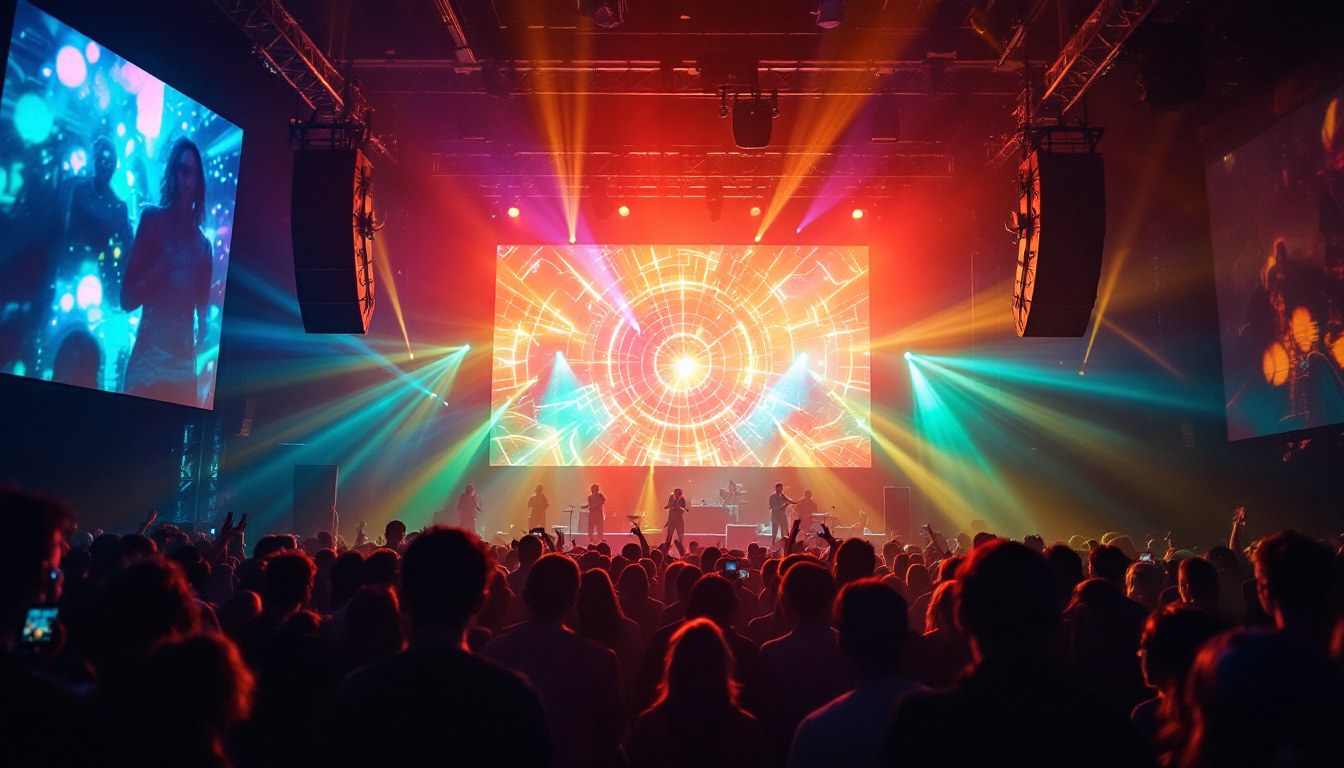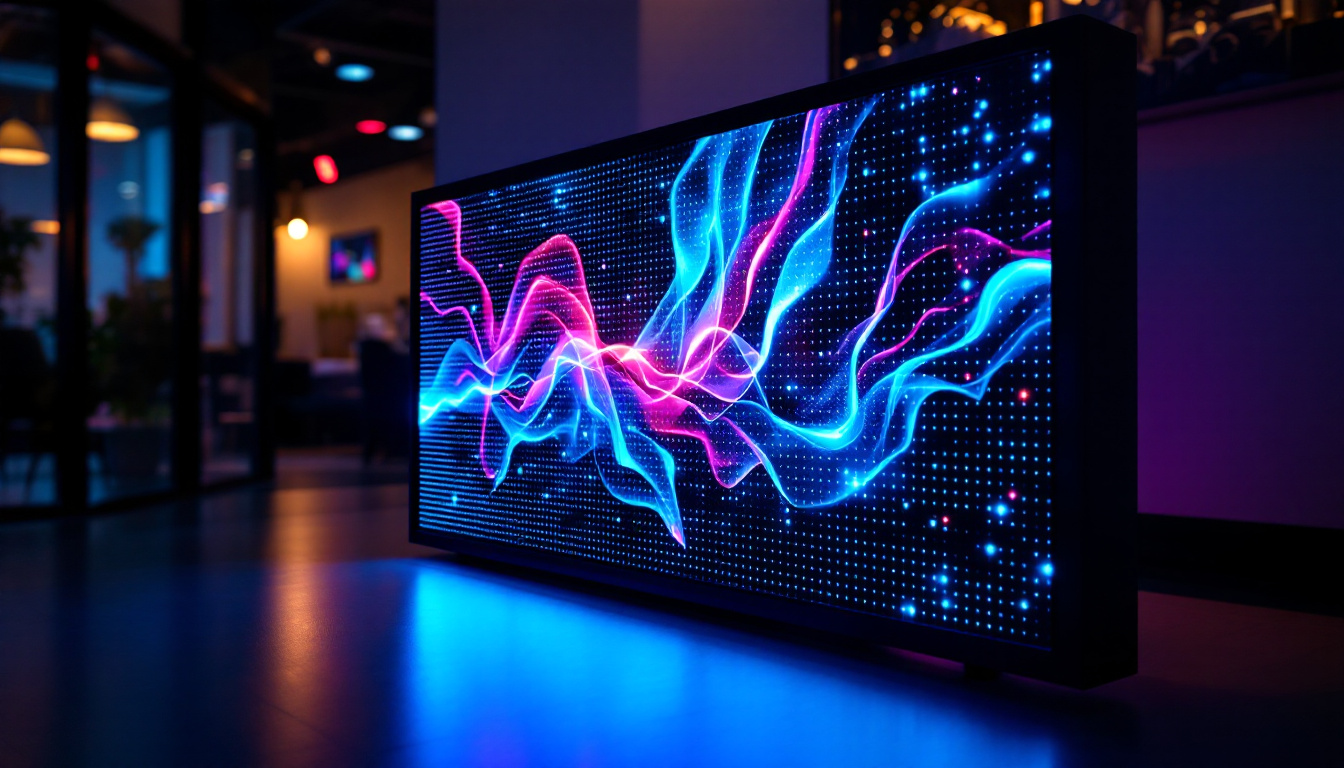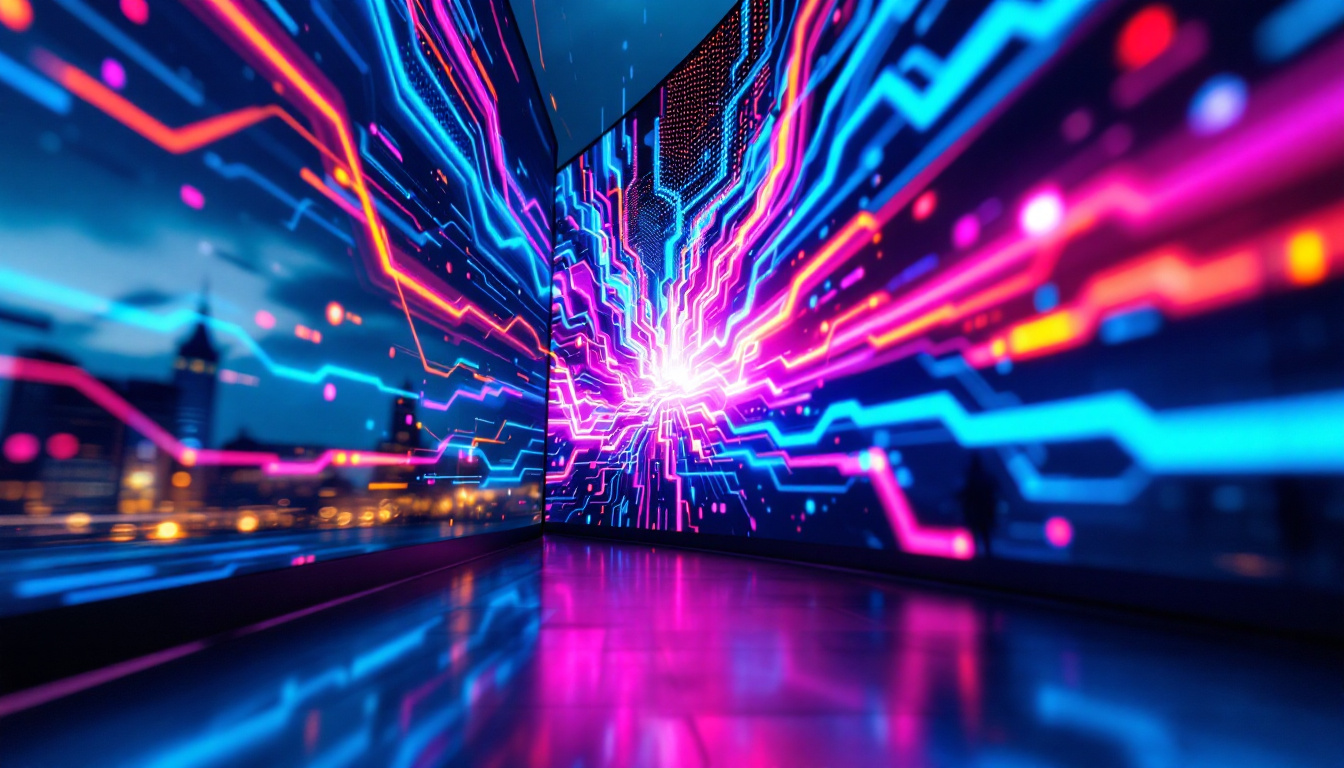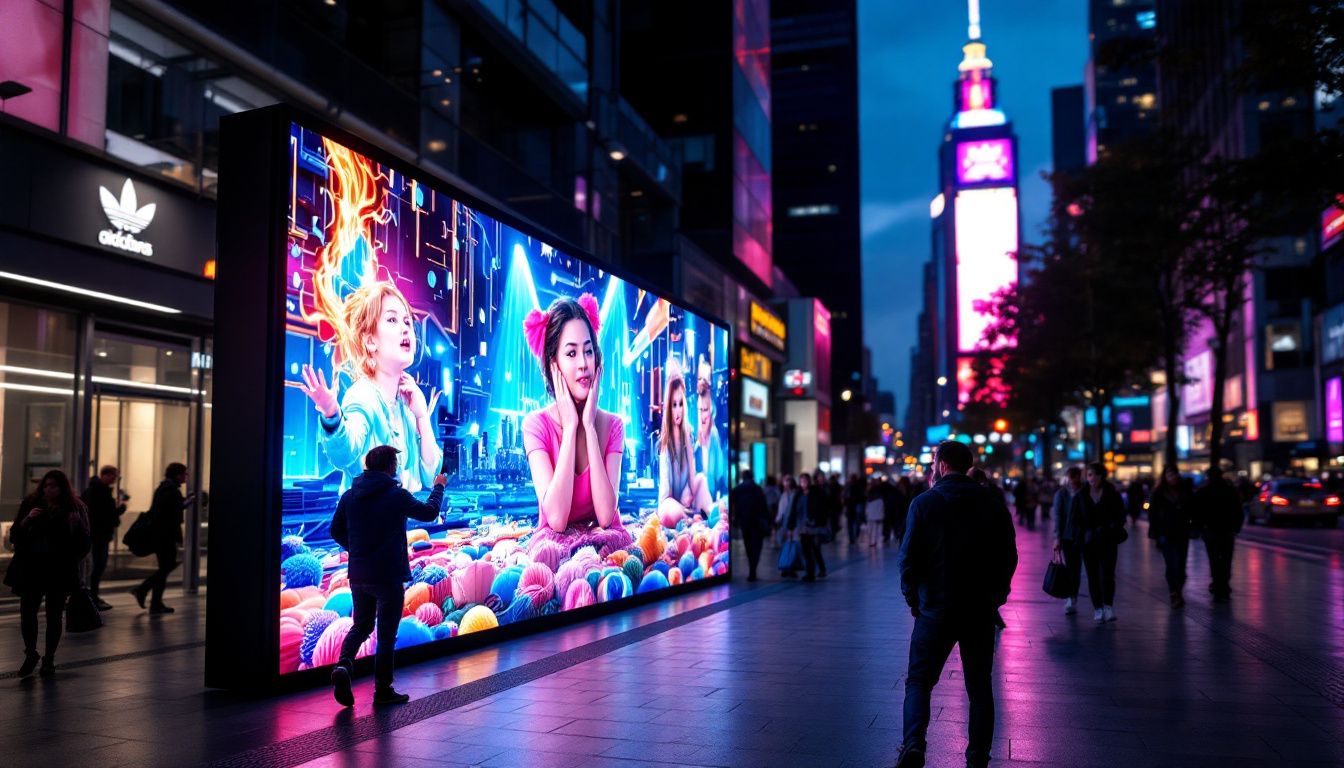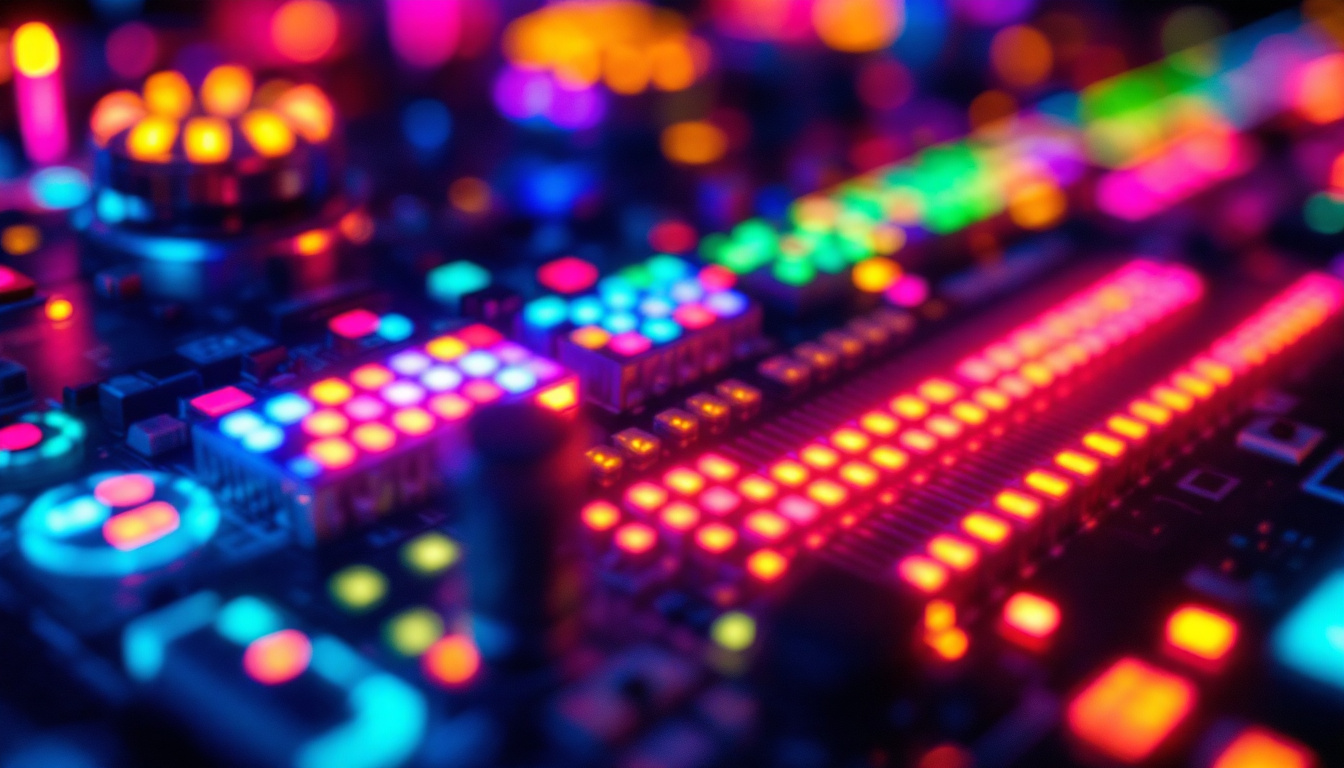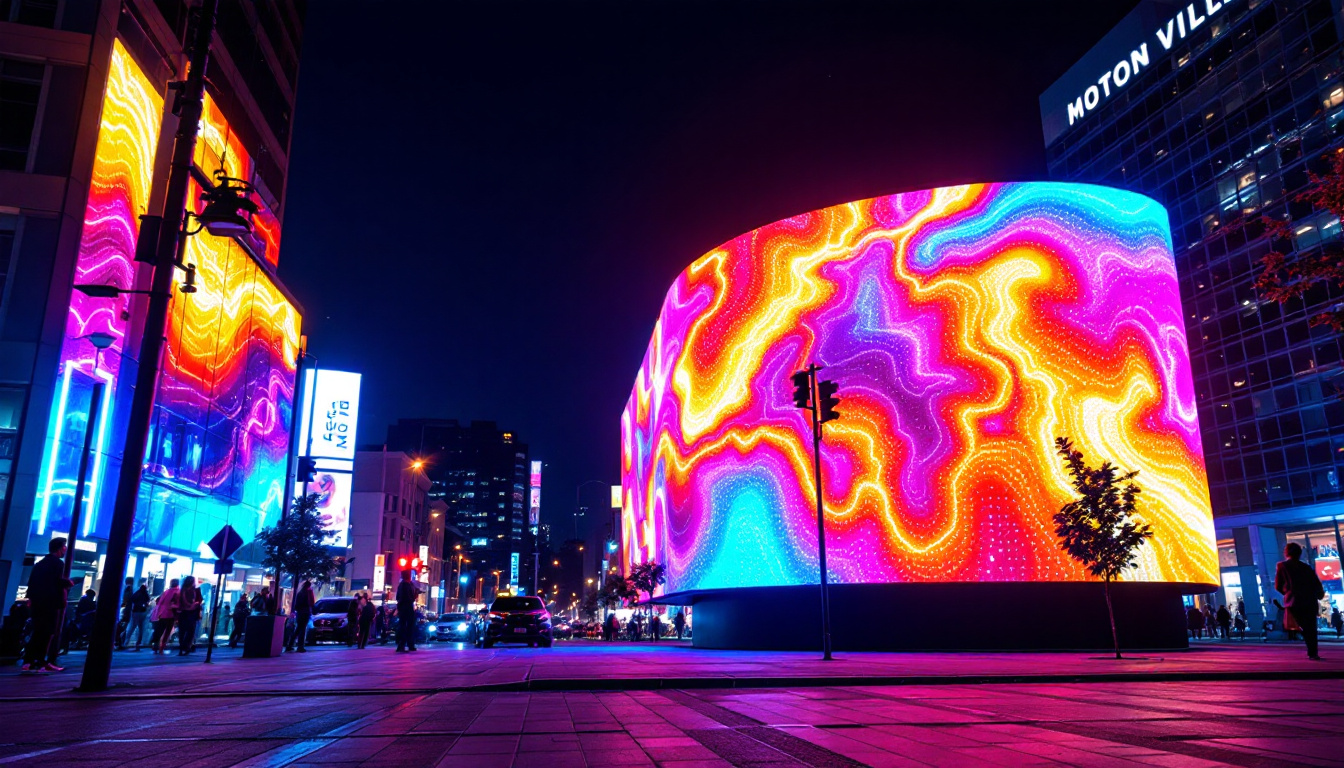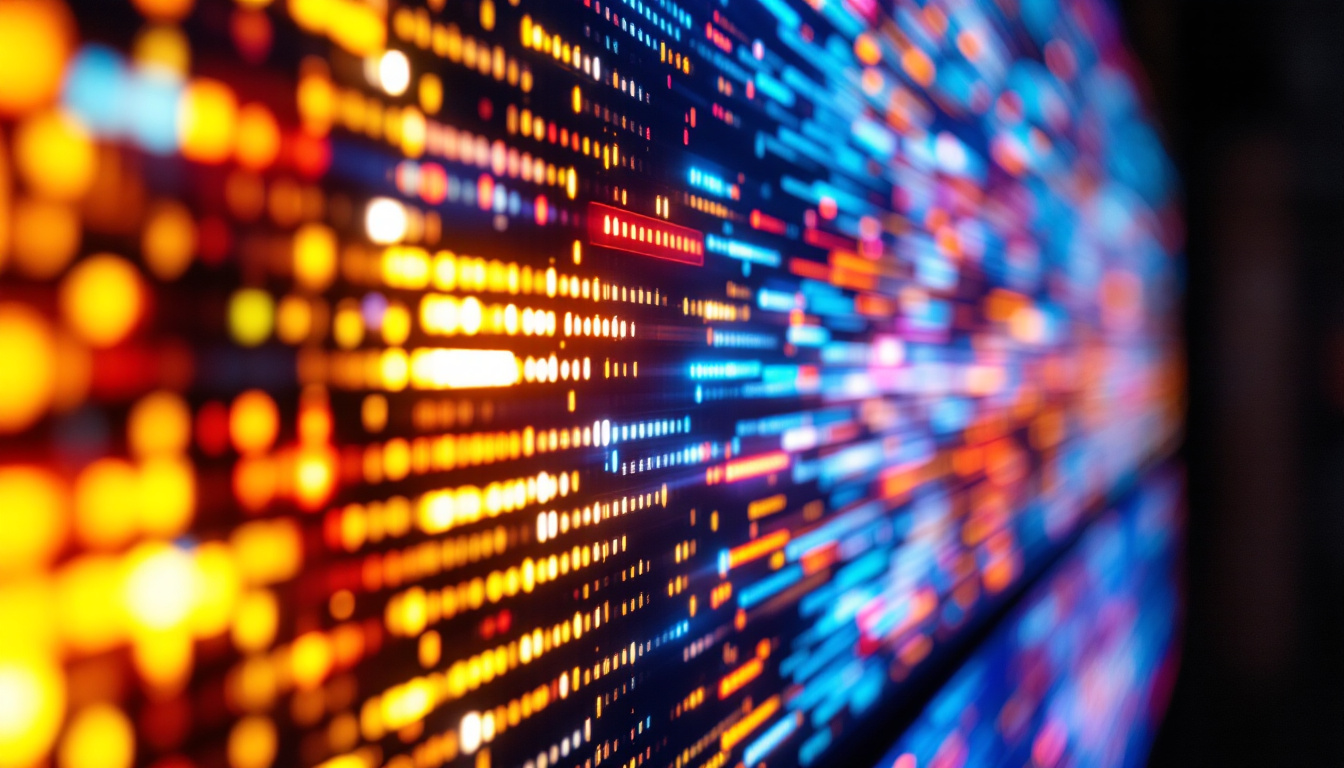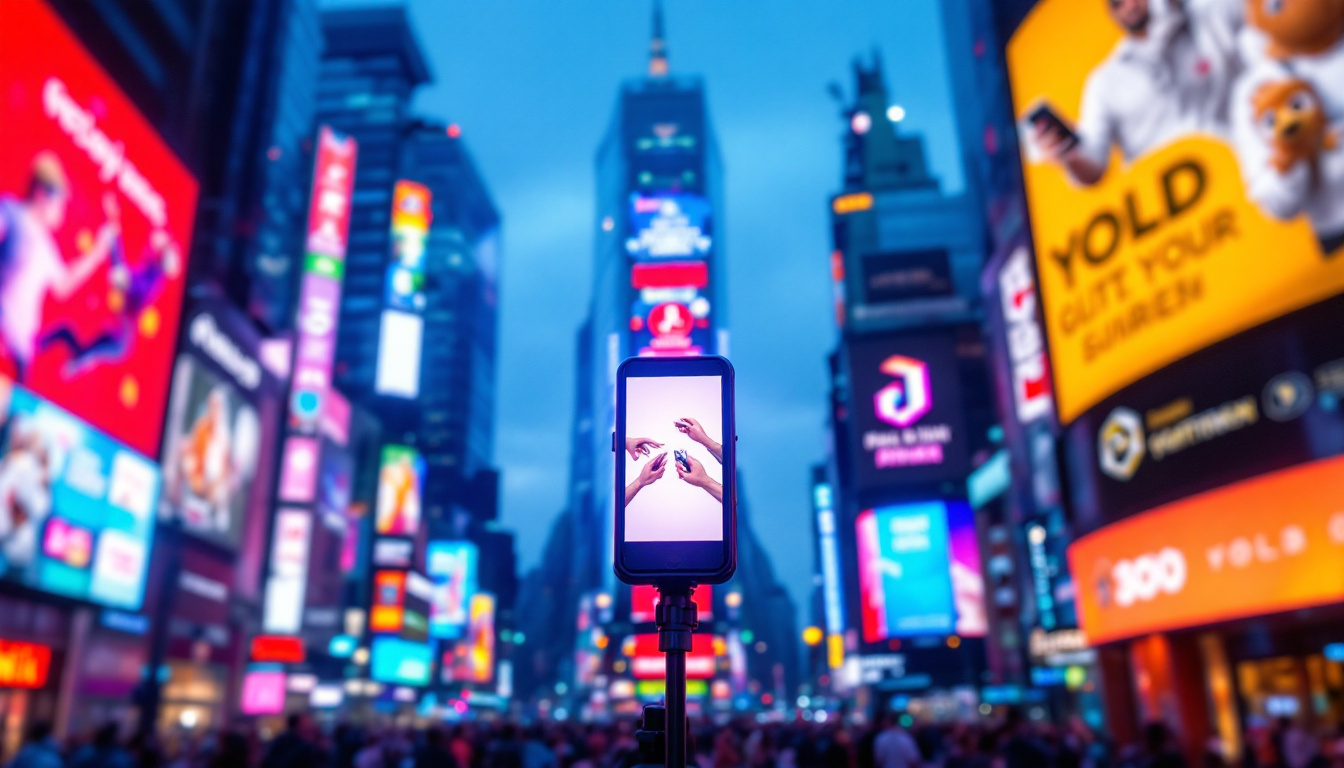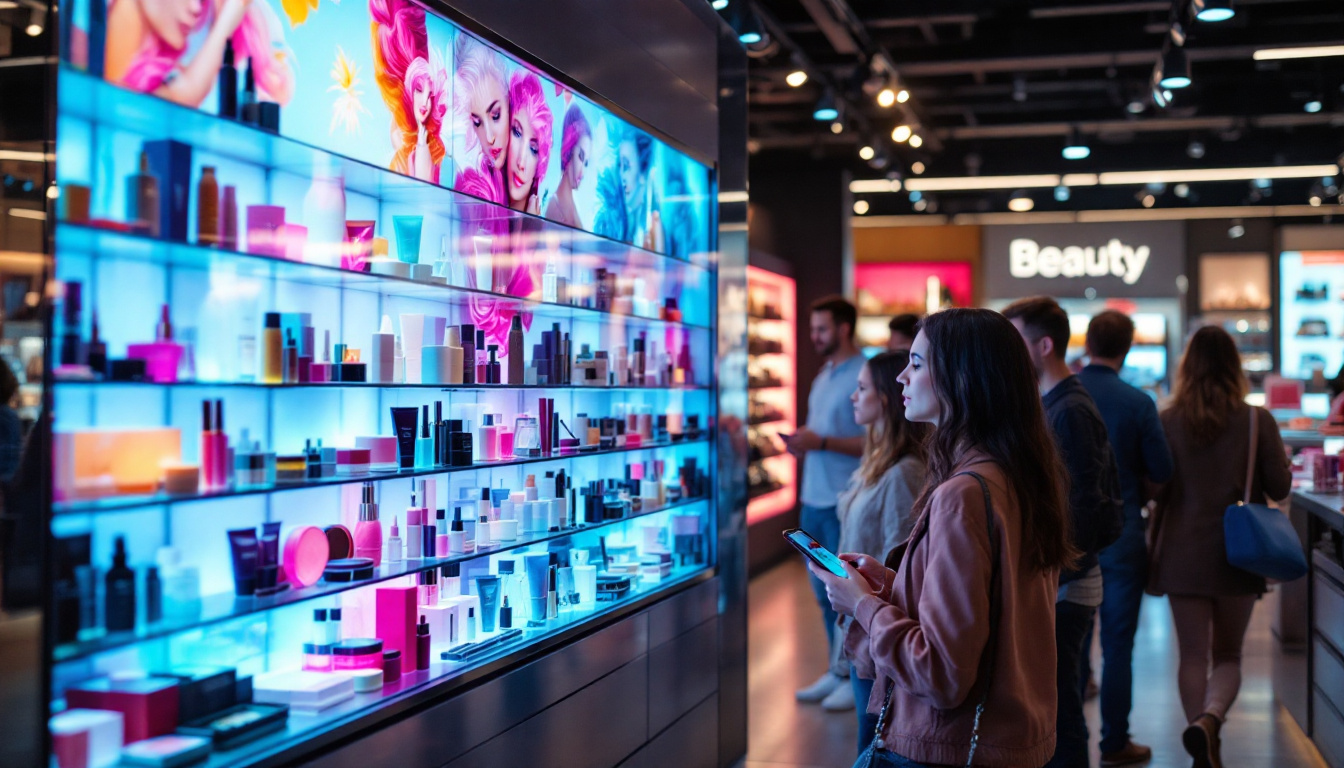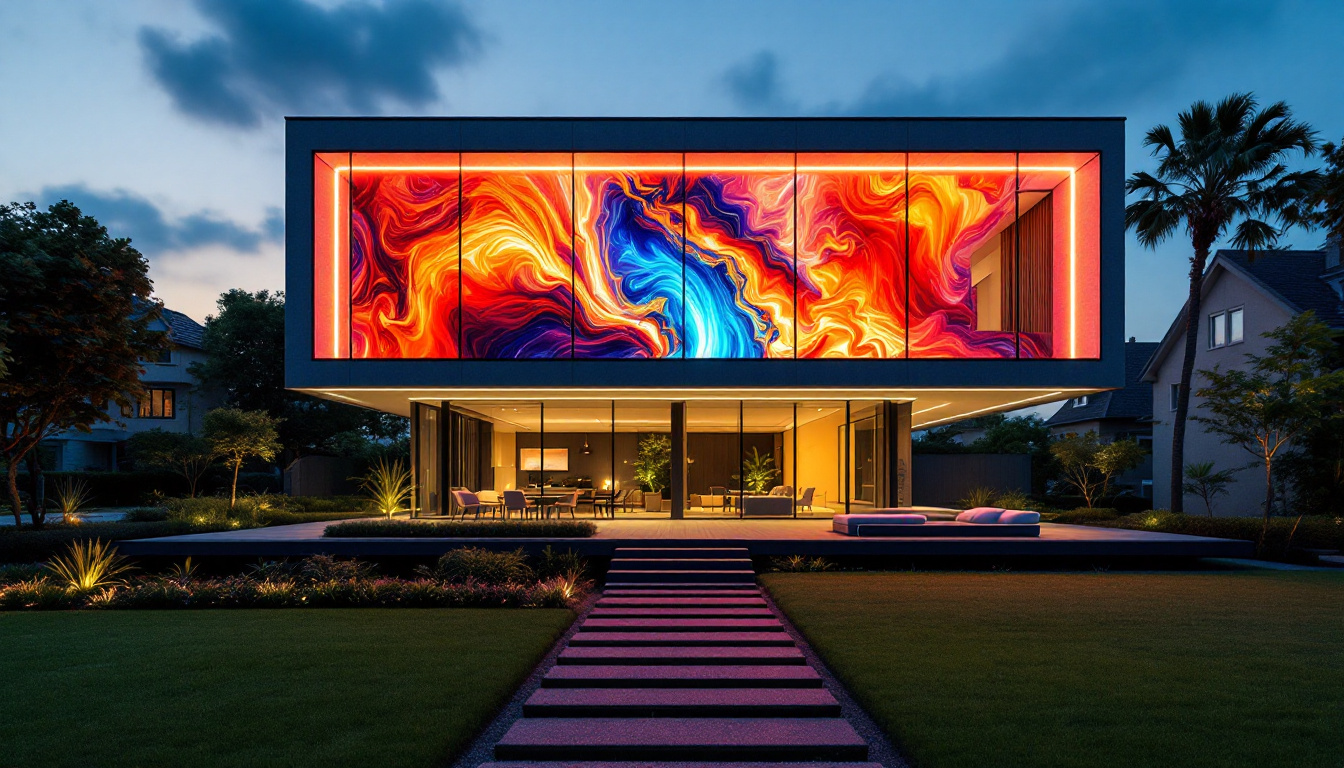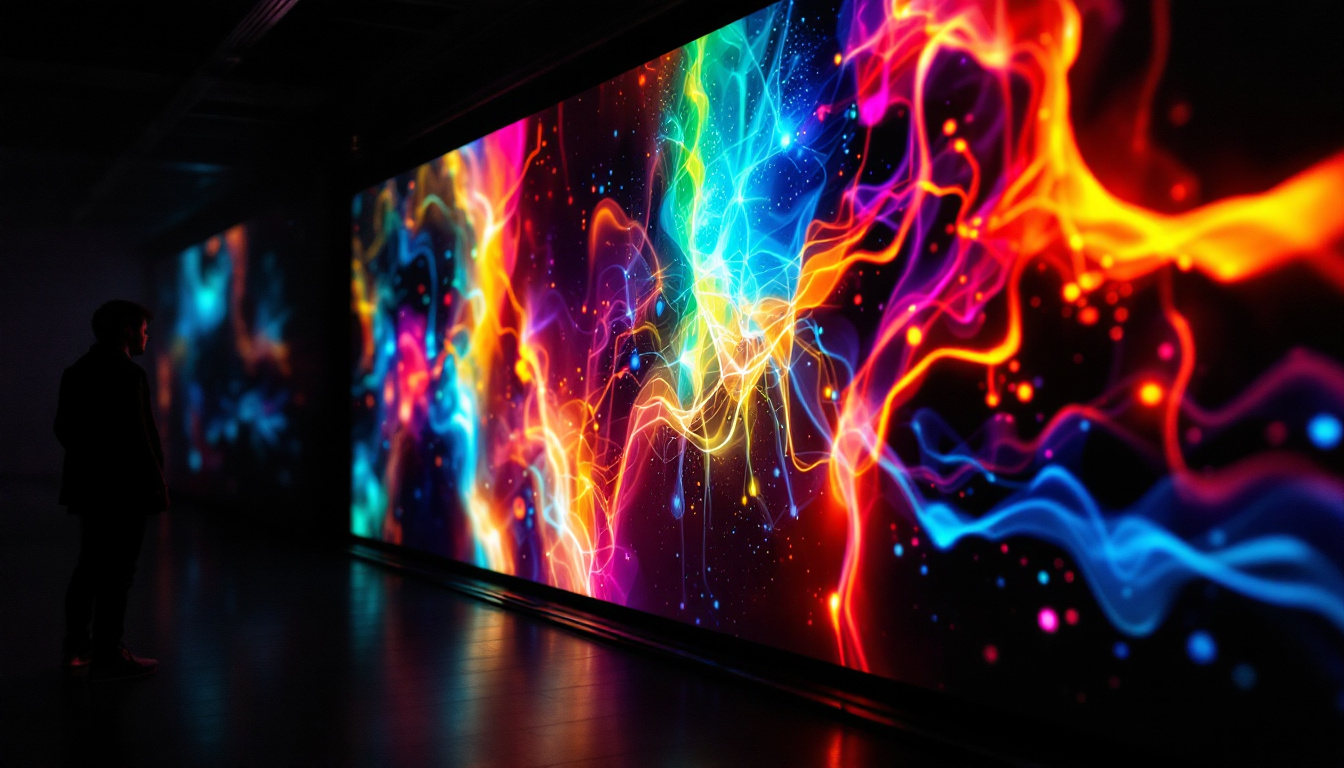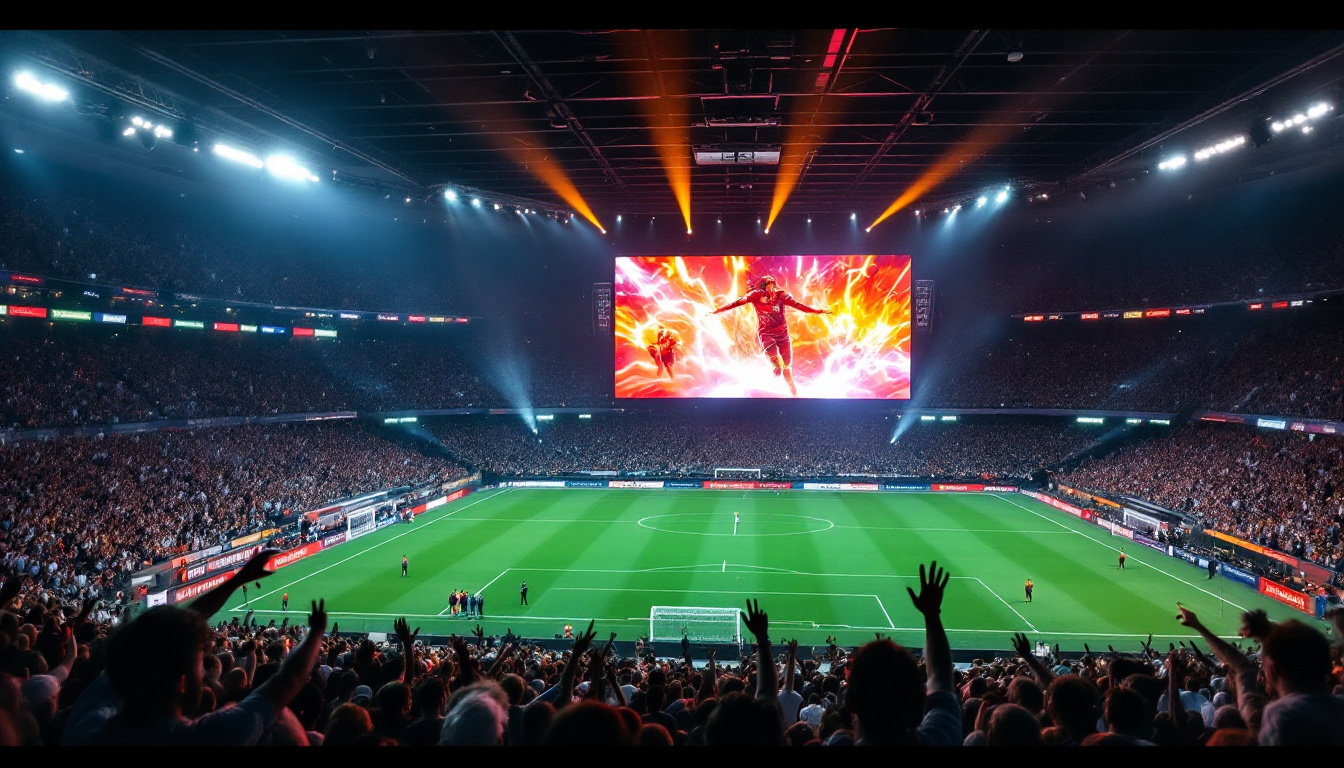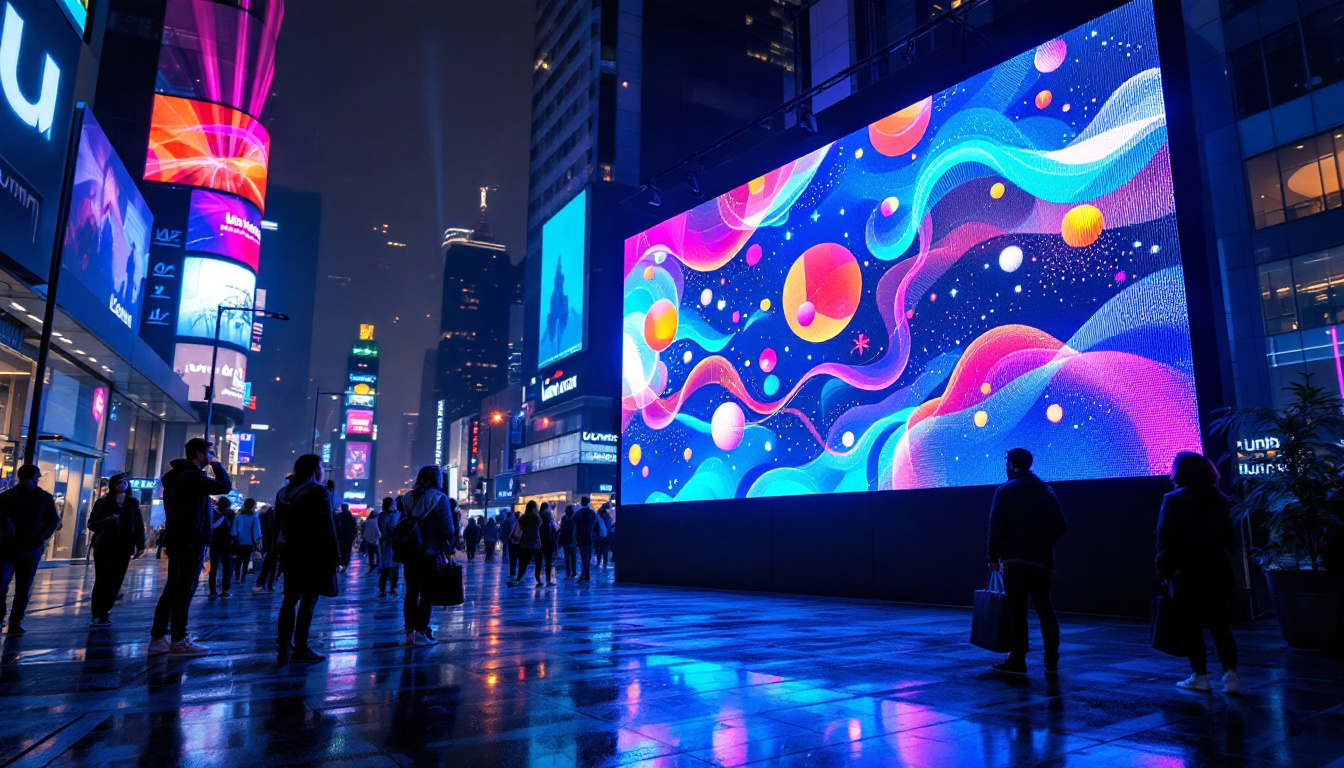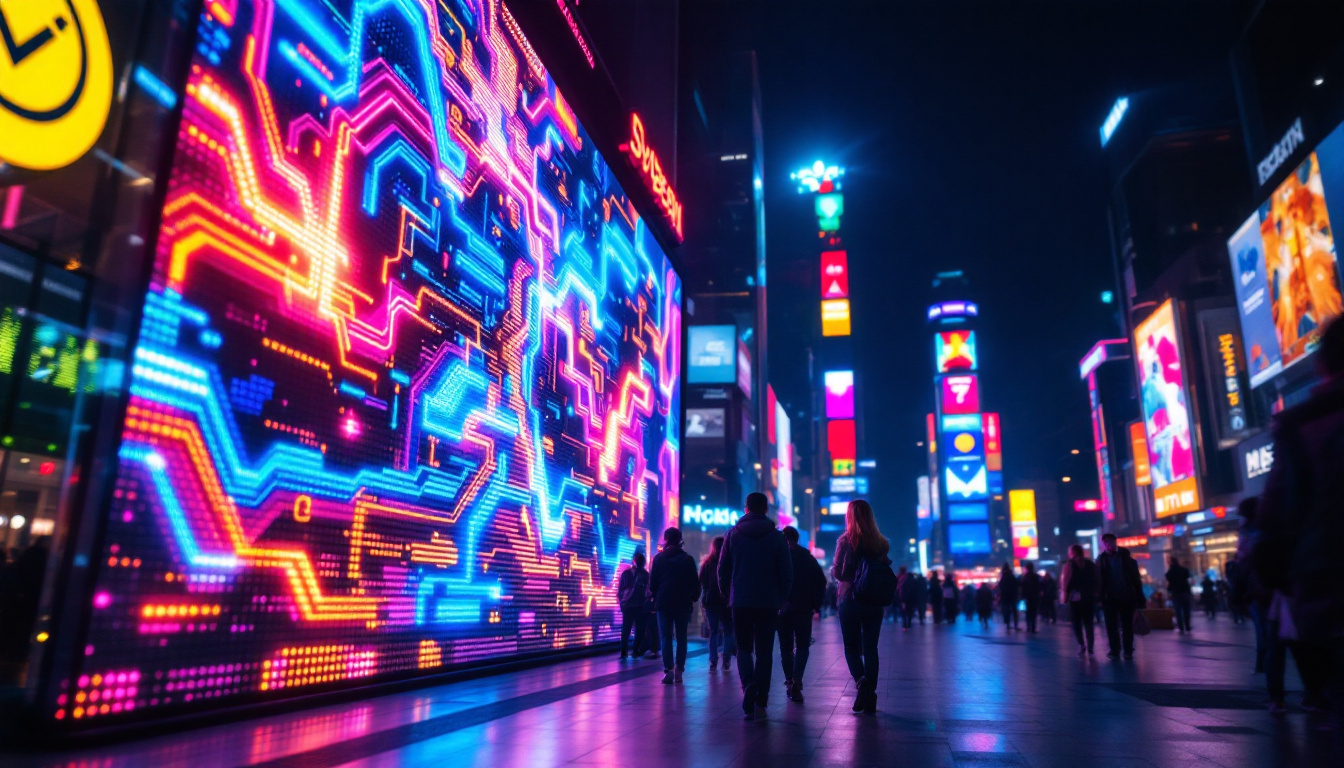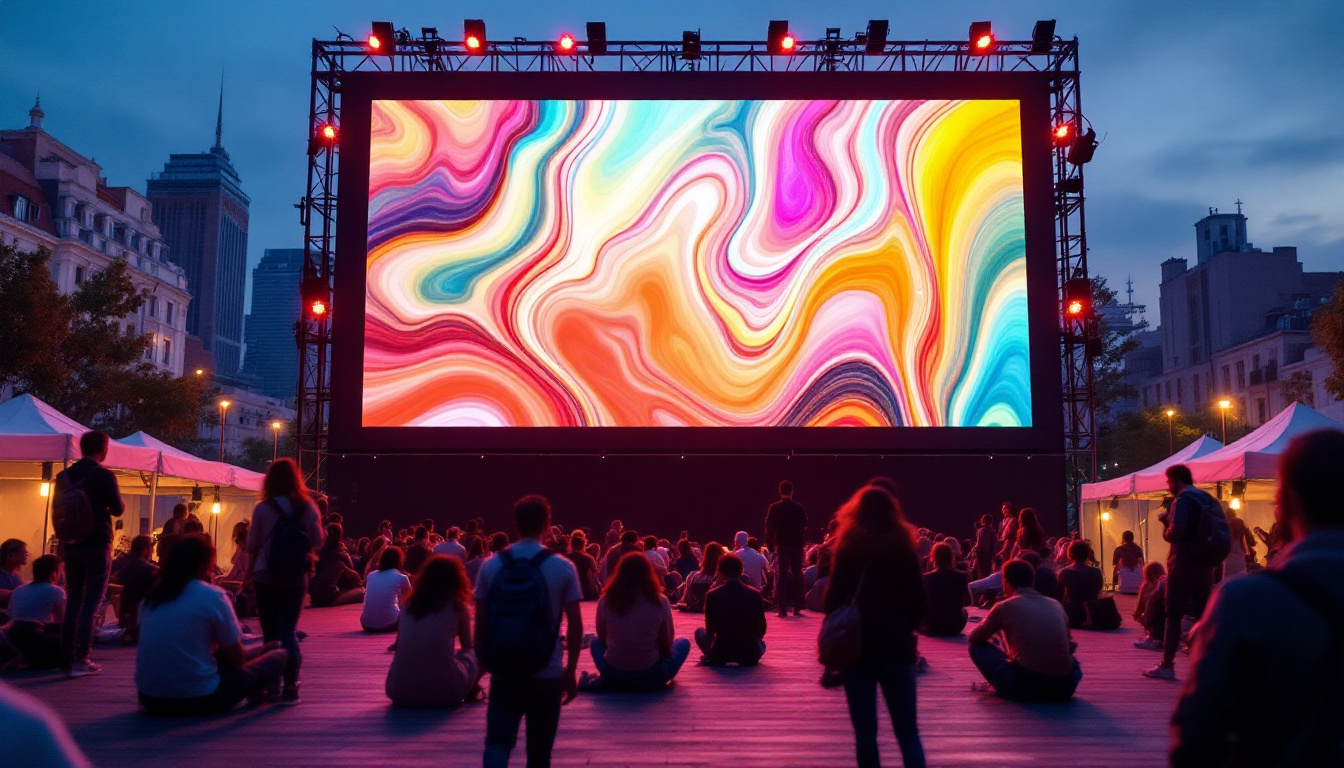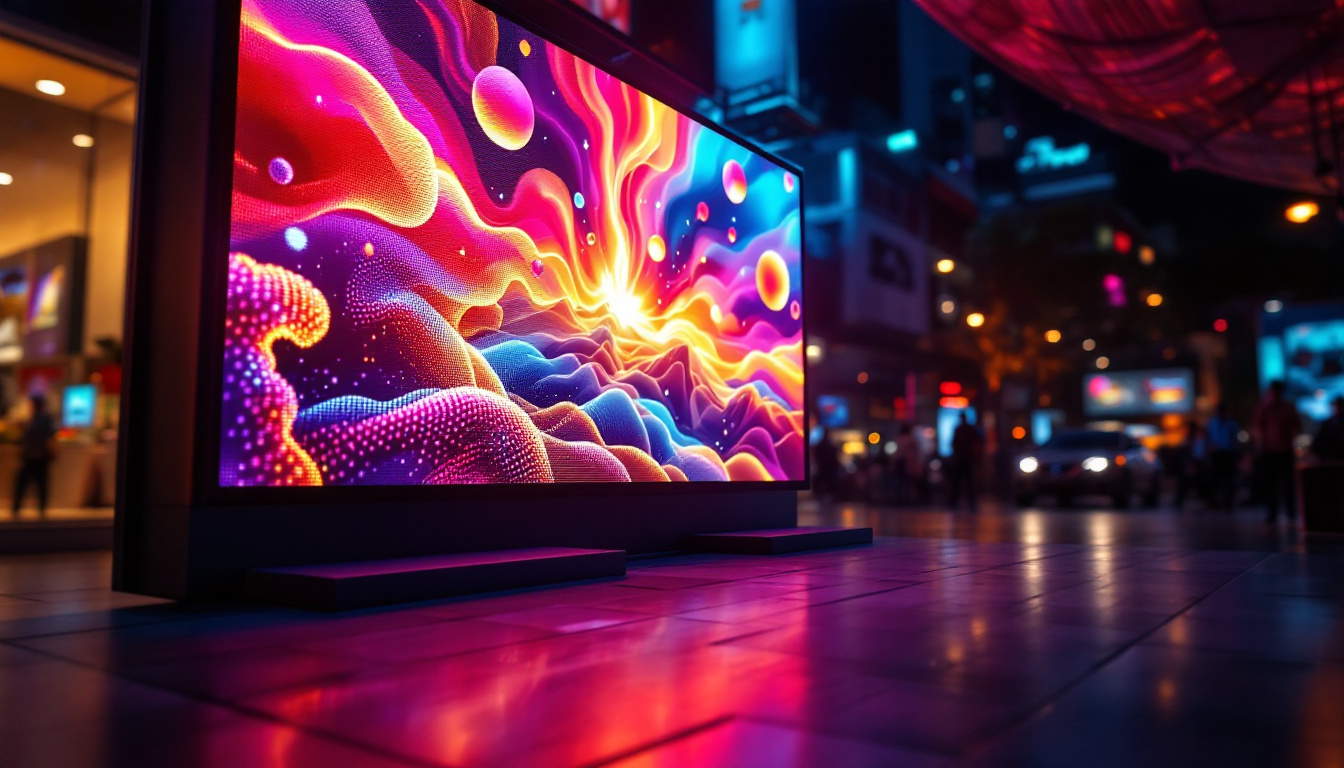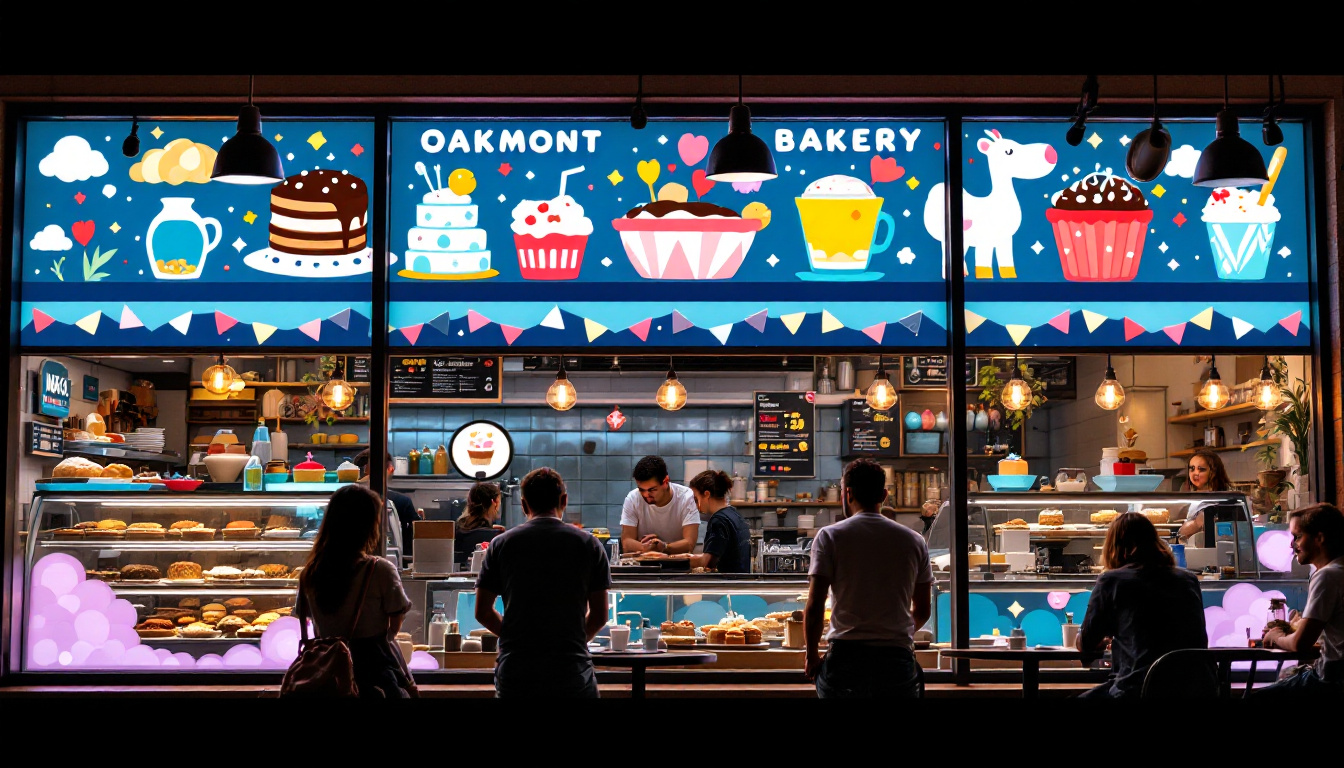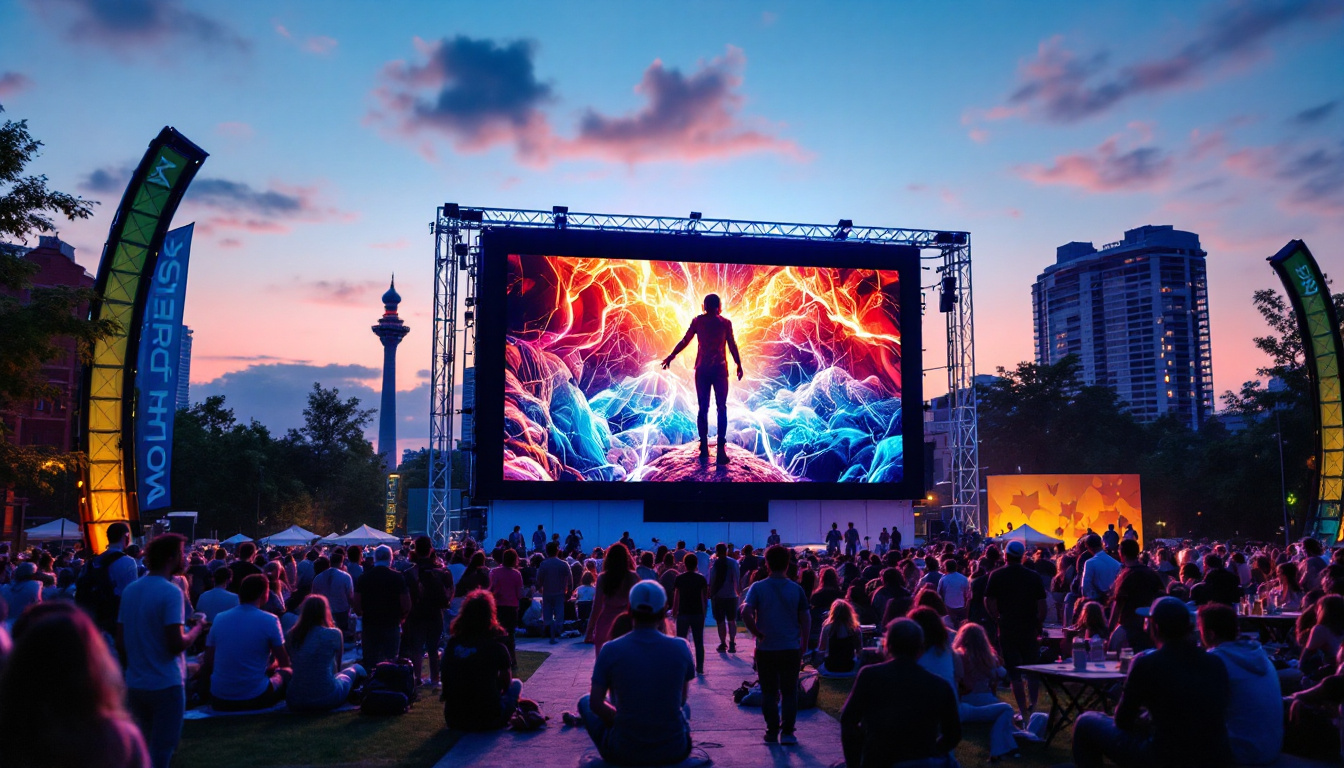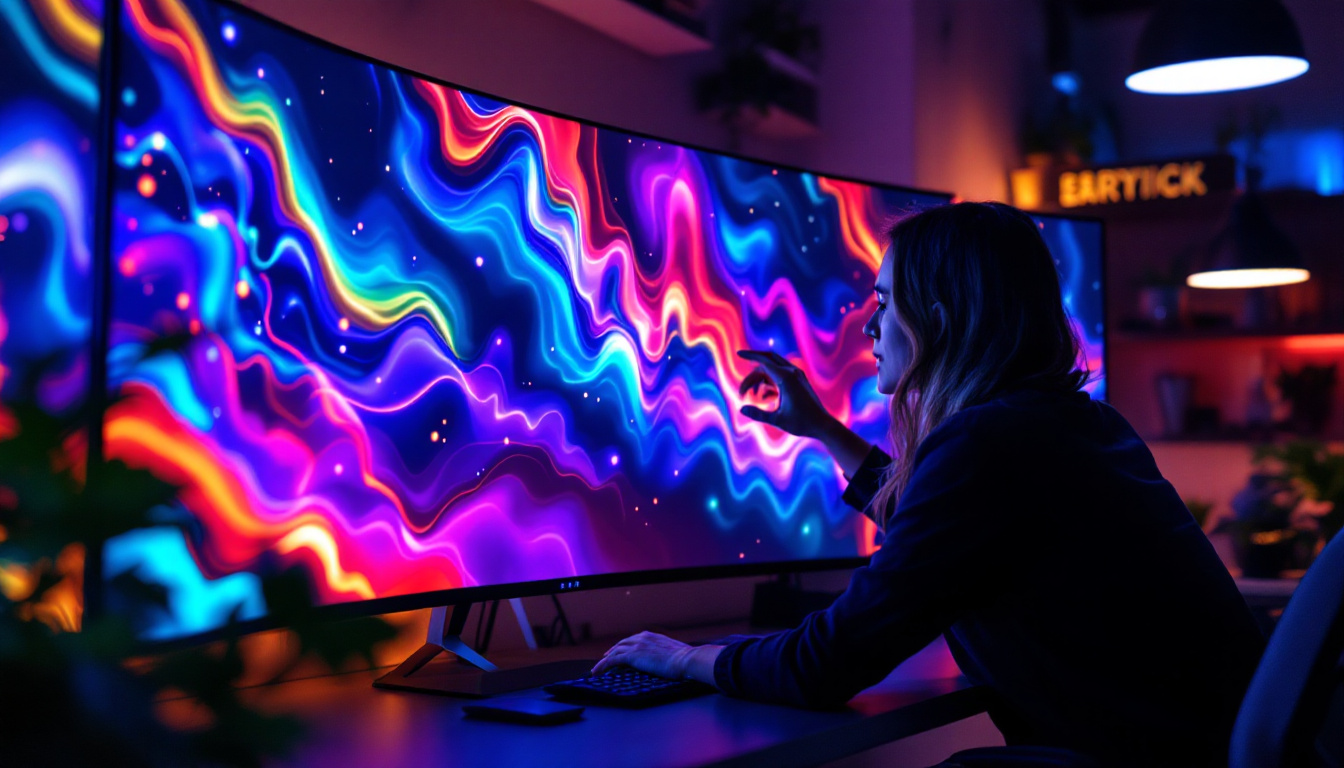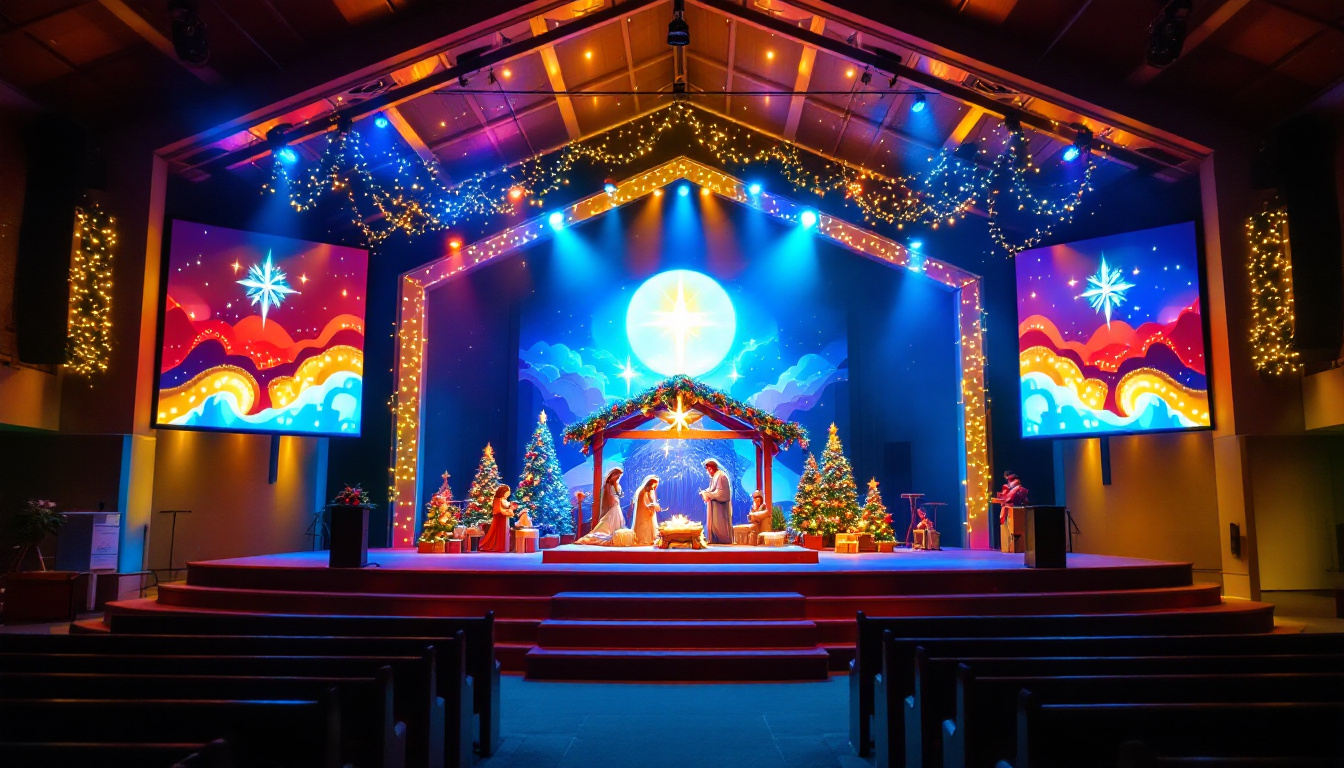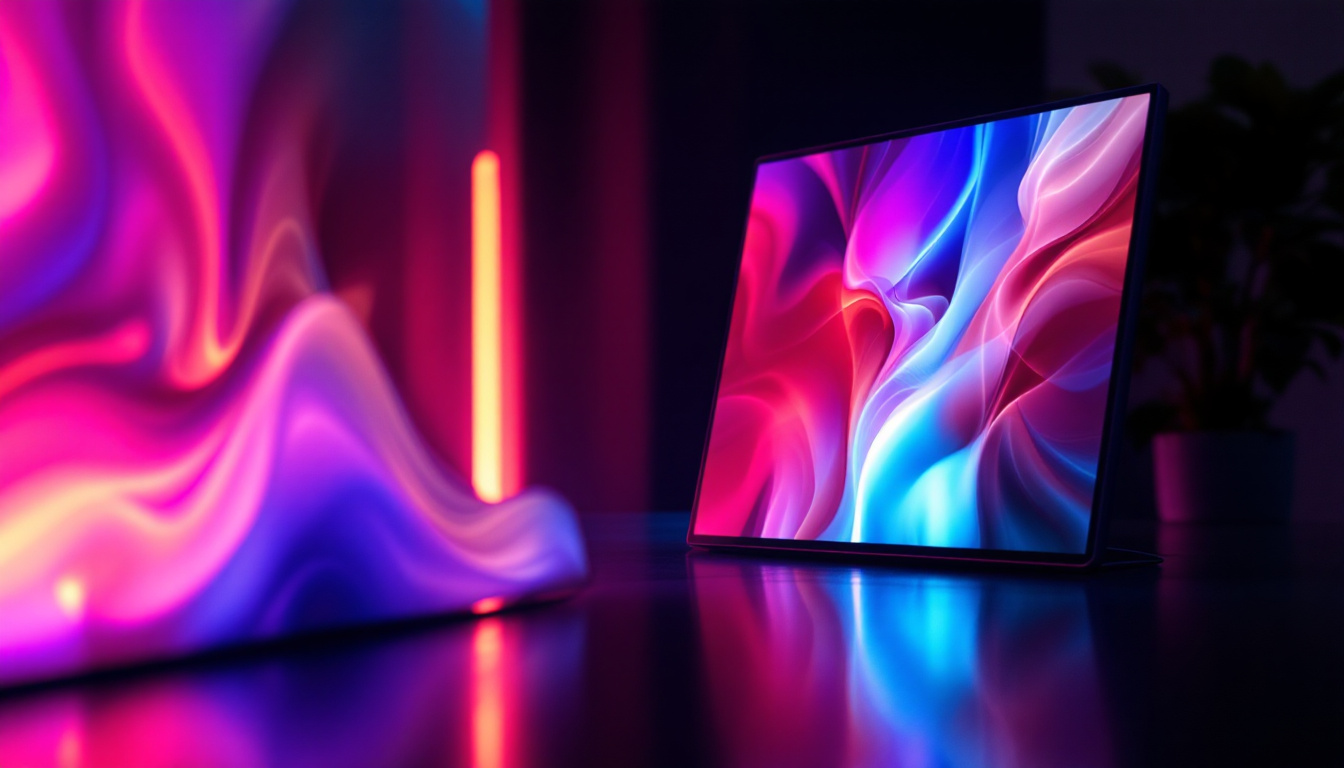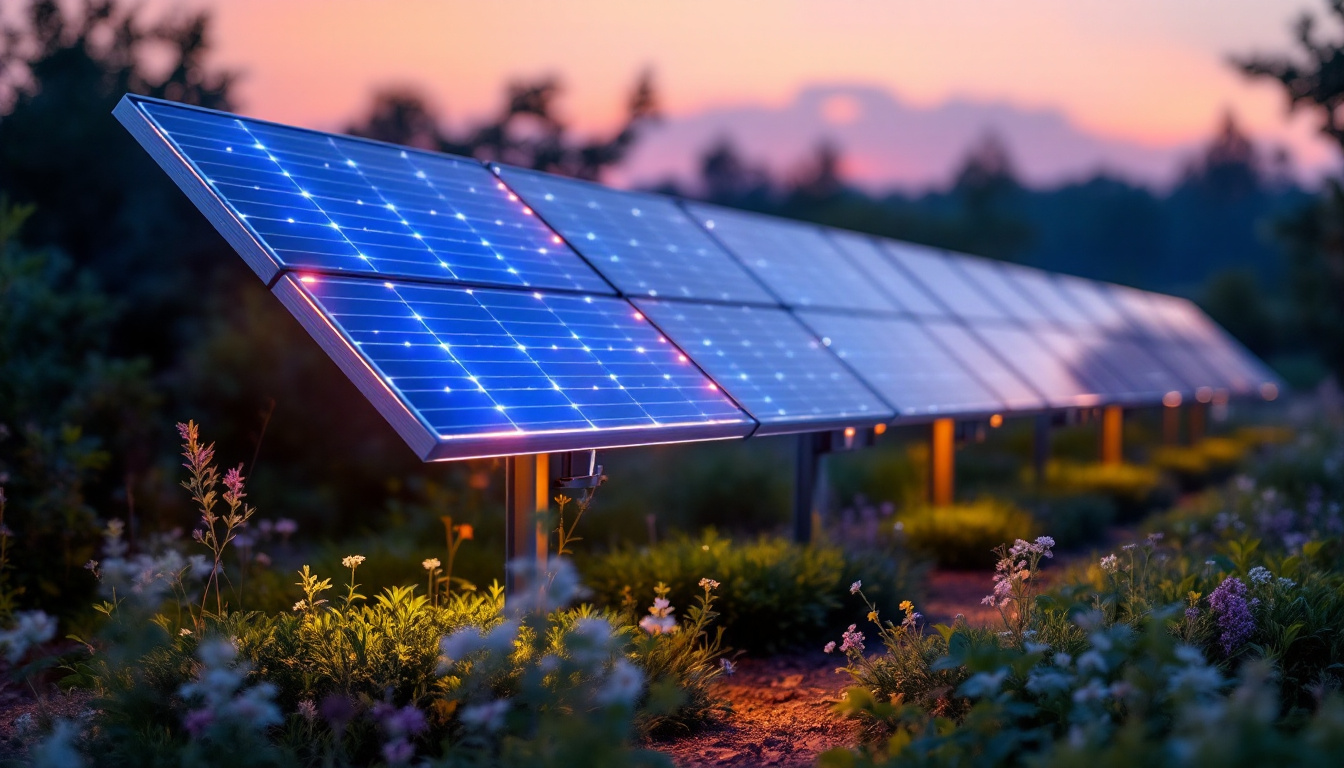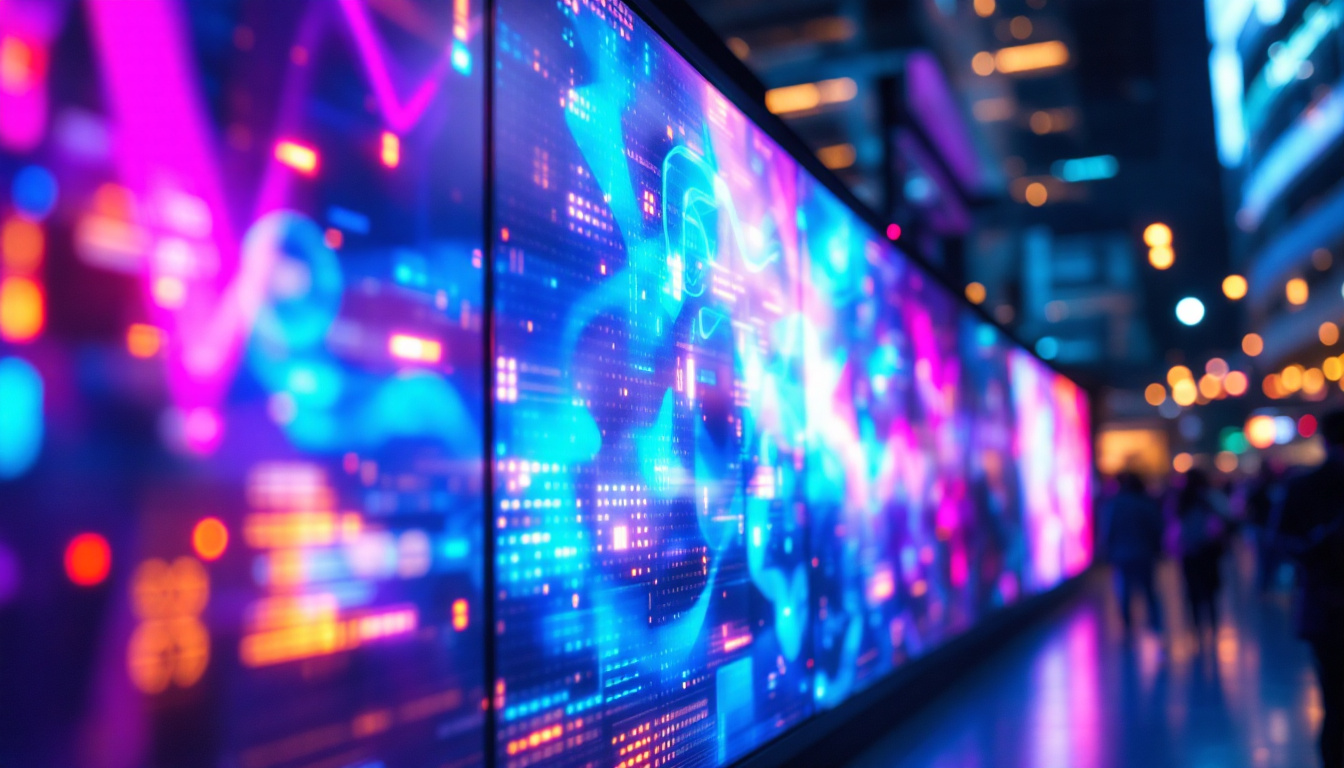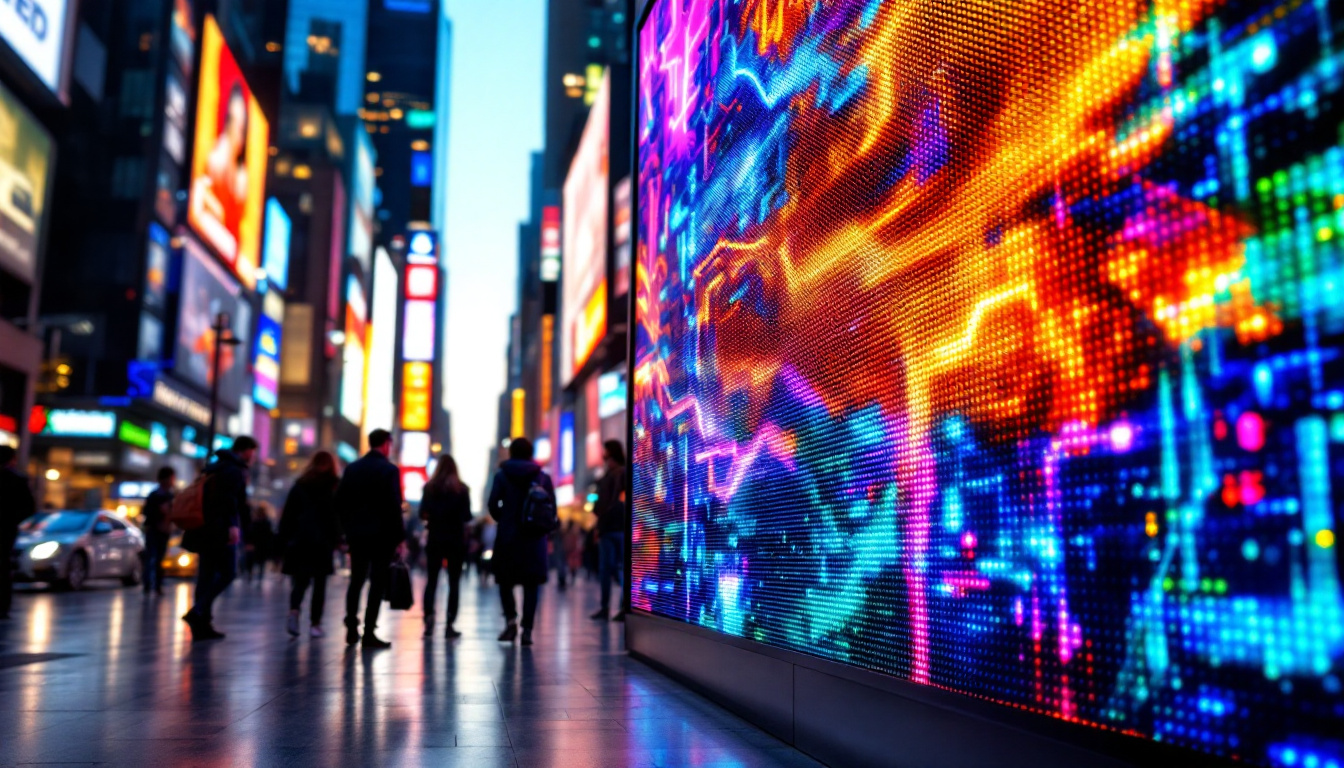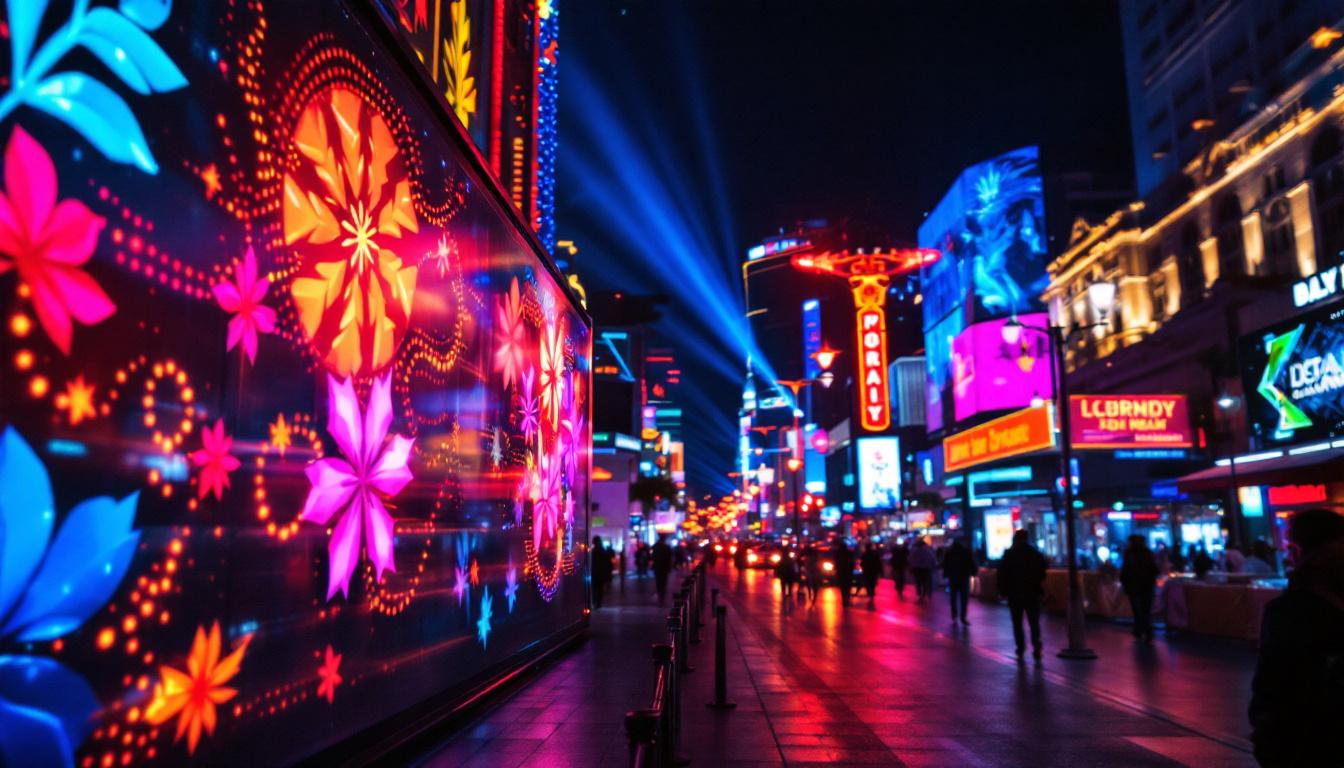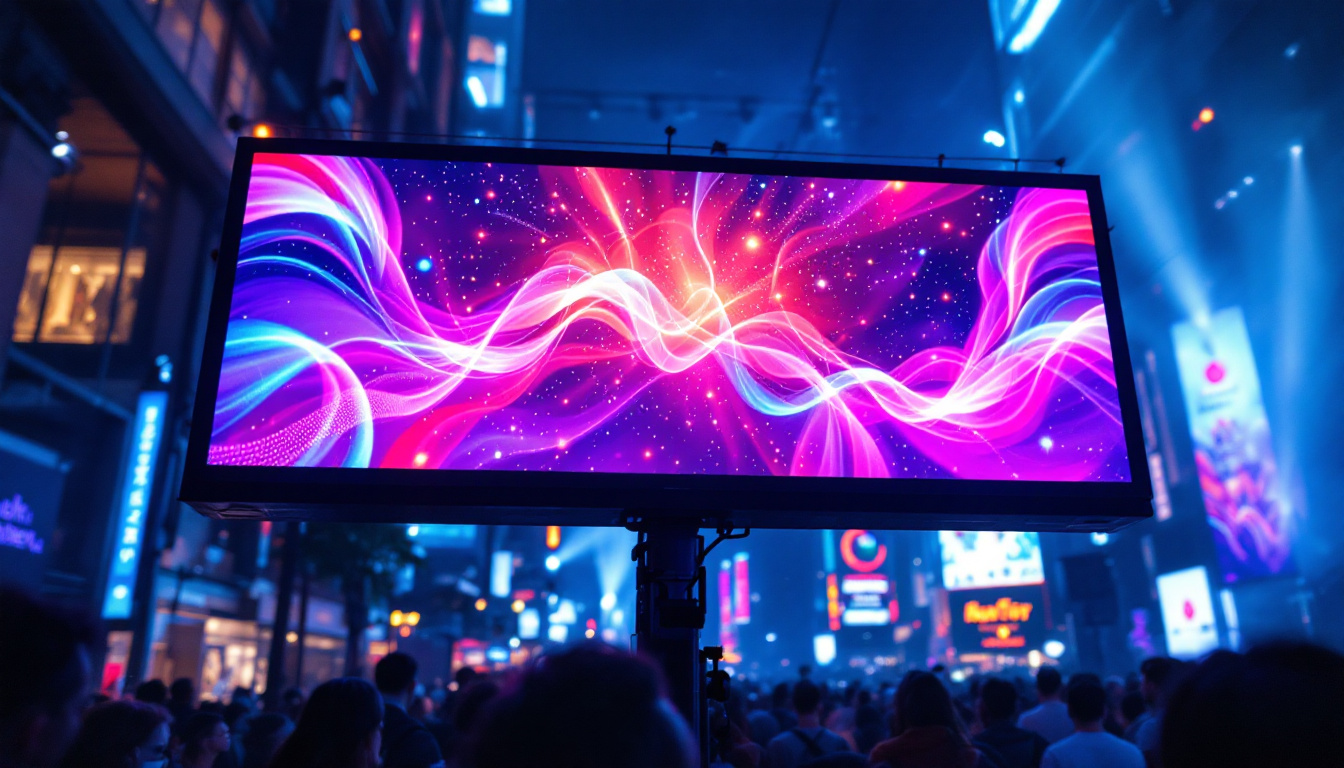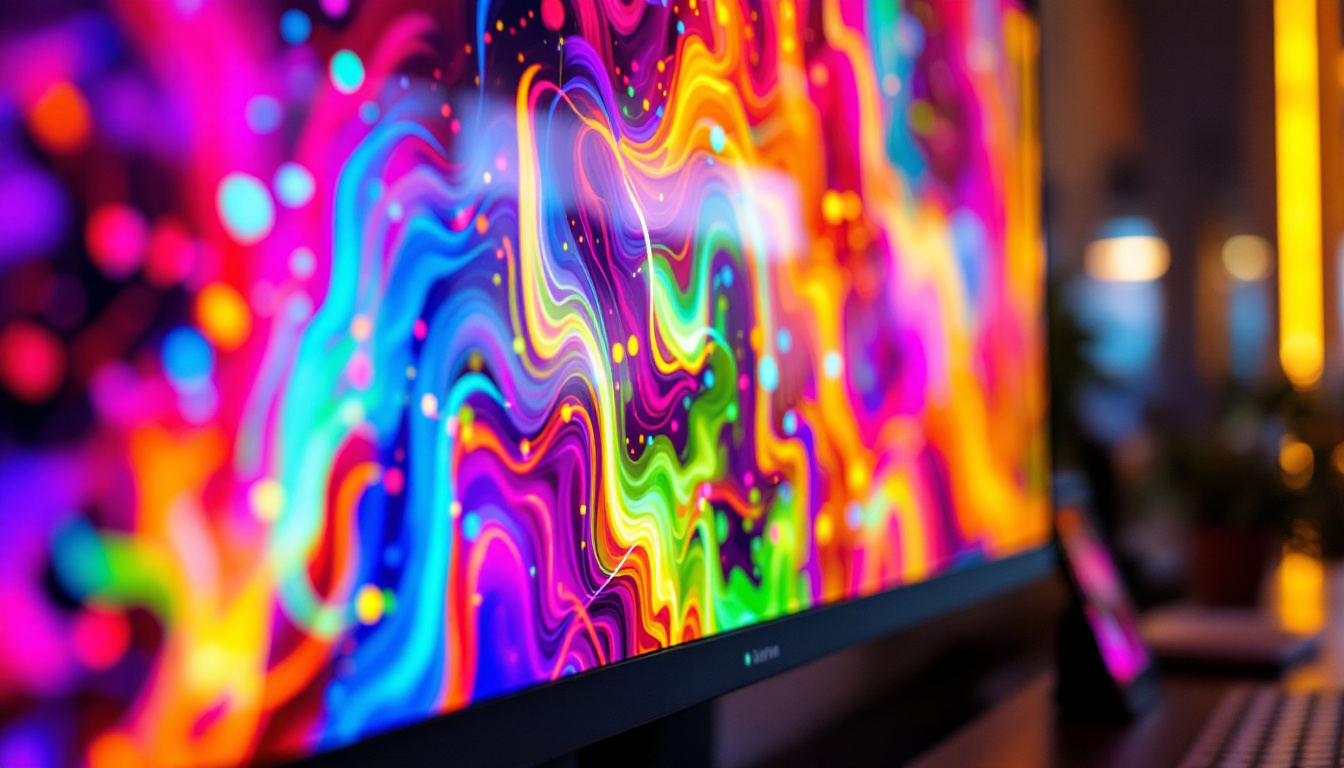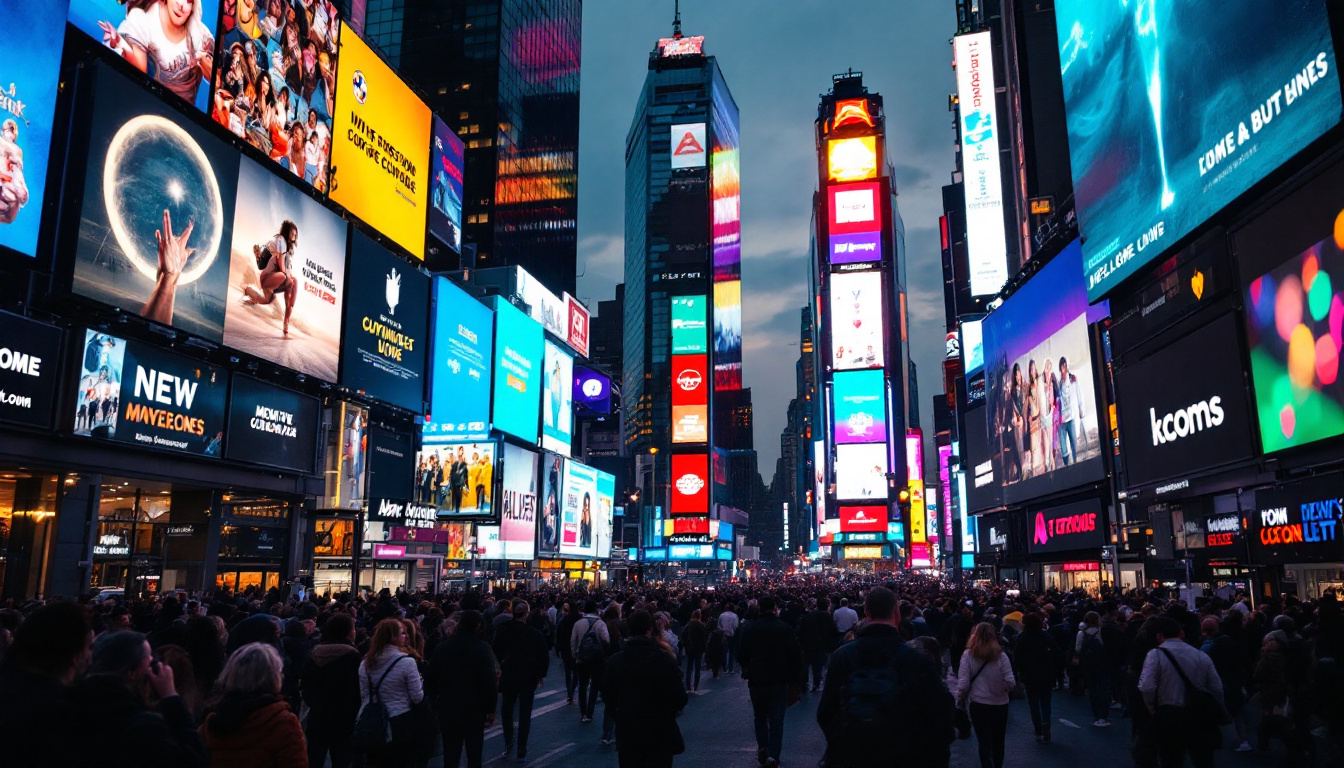In the heart of New York City, the entertainment industry is constantly evolving. One of the most significant advancements in recent years has been the introduction of LED volume stages. These innovative displays are transforming how filmmakers, event organizers, and performers create immersive experiences. This article delves into the intricacies of LED volume stages, their technology, applications, and the impact they have on the industry.
Understanding LED Volume Technology
LED volume technology represents a remarkable shift in visual storytelling. At its core, it combines high-resolution LED screens with advanced motion tracking systems to create a dynamic backdrop that can change in real-time. This technology allows for the seamless integration of live-action and digital environments, offering a new dimension to productions. The ability to create immersive worlds on set not only enhances the visual appeal but also opens up creative possibilities that were previously constrained by physical locations or elaborate set designs.
The Components of LED Volume Stages
To grasp how LED volume stages function, it is essential to understand their key components. Typically, an LED volume stage consists of:
- LED Panels: These high-resolution screens form the walls of the volume, displaying vibrant visuals that can be adjusted to match the scene being filmed.
- Motion Tracking Systems: Sensors and cameras track the movements of the camera and actors, allowing the displayed background to shift perspective in real-time.
- Control Software: This software manages the content displayed on the LED panels, ensuring synchronization with the live-action elements.
These components work in harmony to create a cohesive and immersive environment, allowing filmmakers to shoot scenes that would otherwise require extensive location setups or green screens. The flexibility of LED volume stages also means that changes can be made on the fly, enabling directors to experiment with different lighting and scenery without the need for extensive reshoots. This adaptability not only saves time but also reduces production costs, making it an attractive option for a variety of projects.
How LED Volume Stages Work
The operation of LED volume stages is a blend of art and technology. When a scene is being filmed, the motion tracking systems detect the camera’s position and orientation. This data is then used to adjust the visuals on the LED panels, creating the illusion of depth and perspective. As the camera moves, the background shifts accordingly, providing a realistic backdrop that enhances the storytelling experience. This real-time interaction between the physical and digital worlds allows for a level of creativity that can transform the filmmaking process.
This technology eliminates the need for traditional green screens, where actors often struggle to visualize their surroundings. Instead, they can interact with a fully realized environment, leading to more authentic performances. The immersive nature of LED volume technology not only aids actors in their performances but also allows cinematographers to capture shots that feel more integrated and cohesive, as the lighting and reflections from the LED screens can interact naturally with the actors and props on set. This synergy between technology and artistry is paving the way for a new era in film and television production, where the boundaries of imagination are continually pushed and redefined.
Applications of LED Volume Stages
LED volume stages have found a wide range of applications across various sectors. From film and television to live events and virtual productions, their versatility is unmatched.
Film and Television Production
One of the most prominent uses of LED volume technology is in film and television production. Major studios have begun to adopt this technology for its ability to create stunning visuals without the logistical challenges of traditional filming methods. Notable examples include:
- The Mandalorian: This groundbreaking series utilized LED volume stages to create immersive worlds, allowing for seamless transitions between different environments.
- Avatar Sequels: The production team for the Avatar sequels has also embraced this technology, enhancing the visual storytelling while maintaining a high level of realism.
By integrating LED volume stages into their workflows, filmmakers can achieve a level of creative freedom that was previously unattainable. The technology allows for real-time adjustments to lighting and backgrounds, enabling directors and cinematographers to visualize scenes as they are being shot. This immediacy not only saves time in post-production but also fosters a collaborative environment on set, as actors and crew can see the final visual effects during filming, leading to more authentic performances.
Live Events and Concerts
Beyond film and television, LED volume stages are making waves in the live events sector. Concerts, corporate events, and theatrical performances are increasingly incorporating this technology to enhance audience engagement. The benefits include:
- Dynamic Backdrops: Performers can interact with vibrant, ever-changing visuals that complement their performances, creating a more immersive experience for the audience.
- Cost Efficiency: With LED volume stages, event organizers can reduce the need for elaborate set designs and location shoots, streamlining the production process.
As artists continue to explore the possibilities of LED volume technology, audiences can expect to see more innovative and captivating performances. This technology not only allows for stunning visual effects but also enables the integration of augmented reality elements, where digital imagery can blend seamlessly with live performances. For instance, during a concert, a musician might perform against a backdrop of a fantastical landscape that shifts in real-time, responding to the rhythm and mood of the music. Such advancements are revolutionizing how stories are told in live settings, making each event a unique experience that resonates with attendees on multiple levels.
The Advantages of LED Volume Stages
LED volume stages offer numerous advantages over traditional filming and production methods. Understanding these benefits can help industry professionals make informed decisions about incorporating this technology into their projects.
Enhanced Visual Quality
One of the most significant advantages of LED volume stages is the enhanced visual quality they provide. The high-resolution LED panels deliver stunning imagery with vibrant colors and sharp details. This level of quality is particularly beneficial for productions aiming to create visually striking content.
Moreover, the ability to adjust the lighting and visuals in real-time allows for greater creative control. Filmmakers can experiment with different looks and feels during production, leading to more polished final products.
Improved Workflow Efficiency
In addition to visual quality, LED volume stages significantly improve workflow efficiency. Traditional filming often involves extensive setup times, location scouting, and post-production work, especially when using green screens. With LED volume technology, many of these challenges are mitigated.
Filmmakers can shoot scenes in a controlled environment, reducing the need for extensive reshoots or adjustments in post-production. This efficiency not only saves time but also reduces costs, making it an attractive option for many productions.
The Future of LED Volume Technology
As LED volume technology continues to evolve, its potential applications are expanding. The future promises even more innovative uses, pushing the boundaries of what is possible in visual storytelling.
Integration with Virtual Reality and Augmented Reality
One of the most exciting prospects for LED volume stages is their integration with virtual reality (VR) and augmented reality (AR). As these technologies become more mainstream, the combination of LED volumes with VR and AR could create entirely new experiences for audiences.
Imagine a concert where the audience can interact with the visuals in real-time, or a film where viewers can choose their perspective within the story. The possibilities are endless, and the fusion of these technologies could redefine entertainment as we know it.
Accessibility and Affordability
As the demand for LED volume technology grows, so too does the potential for increased accessibility and affordability. Currently, the cost of setting up LED volume stages can be prohibitive for smaller productions. However, as technology advances and more companies enter the market, prices are expected to decrease.
This shift could democratize access to high-quality visual production, allowing independent filmmakers and smaller organizations to leverage the benefits of LED volume stages. The result could be a more diverse range of stories and perspectives in the entertainment industry.
Challenges and Considerations
Despite the many advantages of LED volume technology, there are challenges and considerations that industry professionals must keep in mind. Understanding these factors is crucial for successful implementation.
Technical Limitations
While LED volume stages offer impressive capabilities, they are not without technical limitations. For instance, the size of the LED panels can restrict the scale of the environments that can be created. Large-scale productions may find it challenging to replicate expansive landscapes or intricate details.
Additionally, the technology requires a skilled team to operate effectively. Proper training and expertise are essential to ensure that the motion tracking and control systems function seamlessly, which can be a barrier for some organizations.
Creative Constraints
Another consideration is the potential for creative constraints. While LED volume stages provide a high degree of flexibility, they may not be suitable for every type of production. Certain genres or styles may still benefit from traditional filming methods, particularly those that rely heavily on practical effects or natural lighting.
Filmmakers must weigh the benefits of LED volume technology against the specific needs of their projects to determine the best approach.
Conclusion
LED volume stages are revolutionizing the entertainment industry, offering a new way to create immersive experiences that captivate audiences. With their ability to blend live-action and digital environments, they are transforming film, television, and live events.
As technology continues to advance, the potential applications of LED volume stages will only expand, paving the way for innovative storytelling and creative expression. While challenges remain, the advantages of this technology are undeniable, making it an exciting frontier for industry professionals.
In New York City, where creativity and innovation thrive, LED volume stages are poised to play a pivotal role in shaping the future of entertainment. As more creators embrace this technology, audiences can look forward to a new era of captivating visual experiences that push the boundaries of imagination.
Discover the Future of LED Display with LumenMatrix
Ready to elevate your visual storytelling and captivate your audience like never before? Explore LumenMatrix’s innovative LED display solutions, where cutting-edge technology meets creative brilliance. From Indoor and Outdoor LED Walls to Custom Displays and Transparent Screens, LumenMatrix offers a diverse range of products designed to revolutionize your visual communication. Whether for film, live events, or dynamic advertising, our displays ensure your message resonates with clarity and impact. Check out LumenMatrix LED Display Solutions today and join the forefront of the entertainment and advertising industries.

